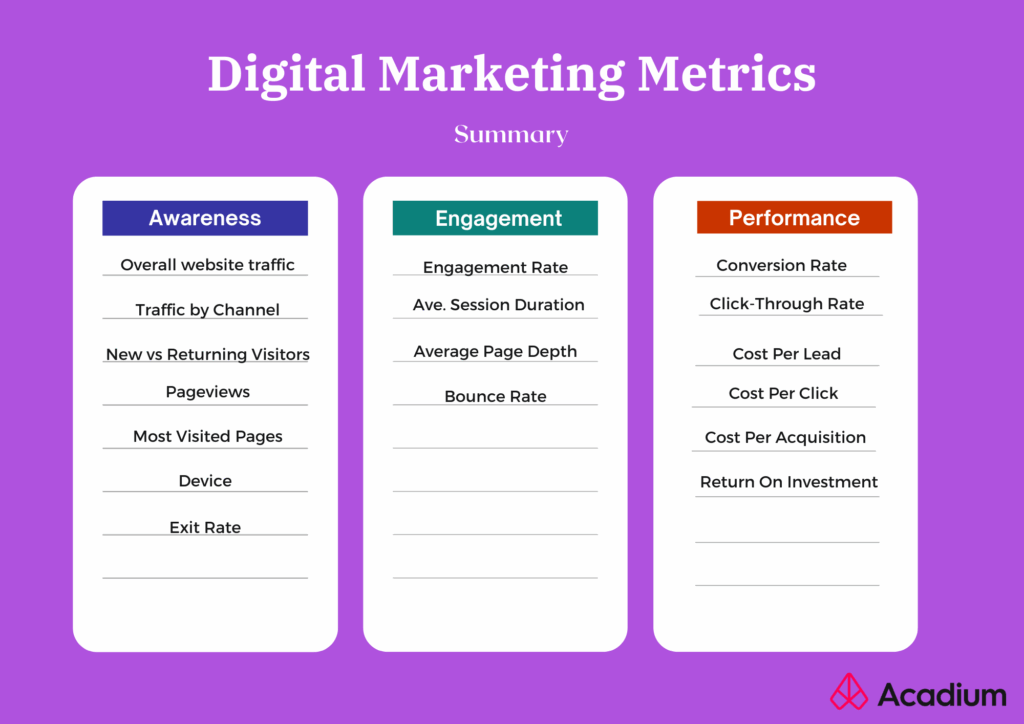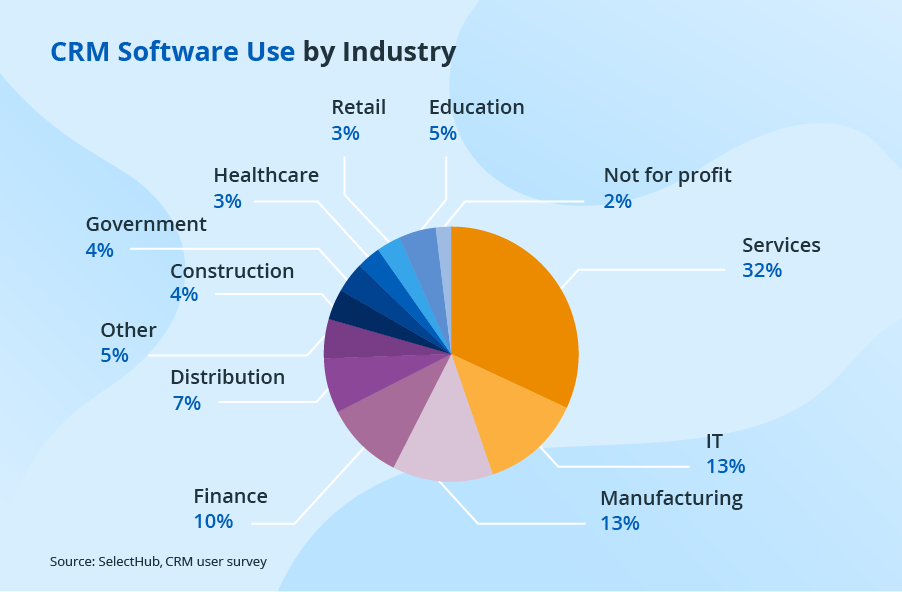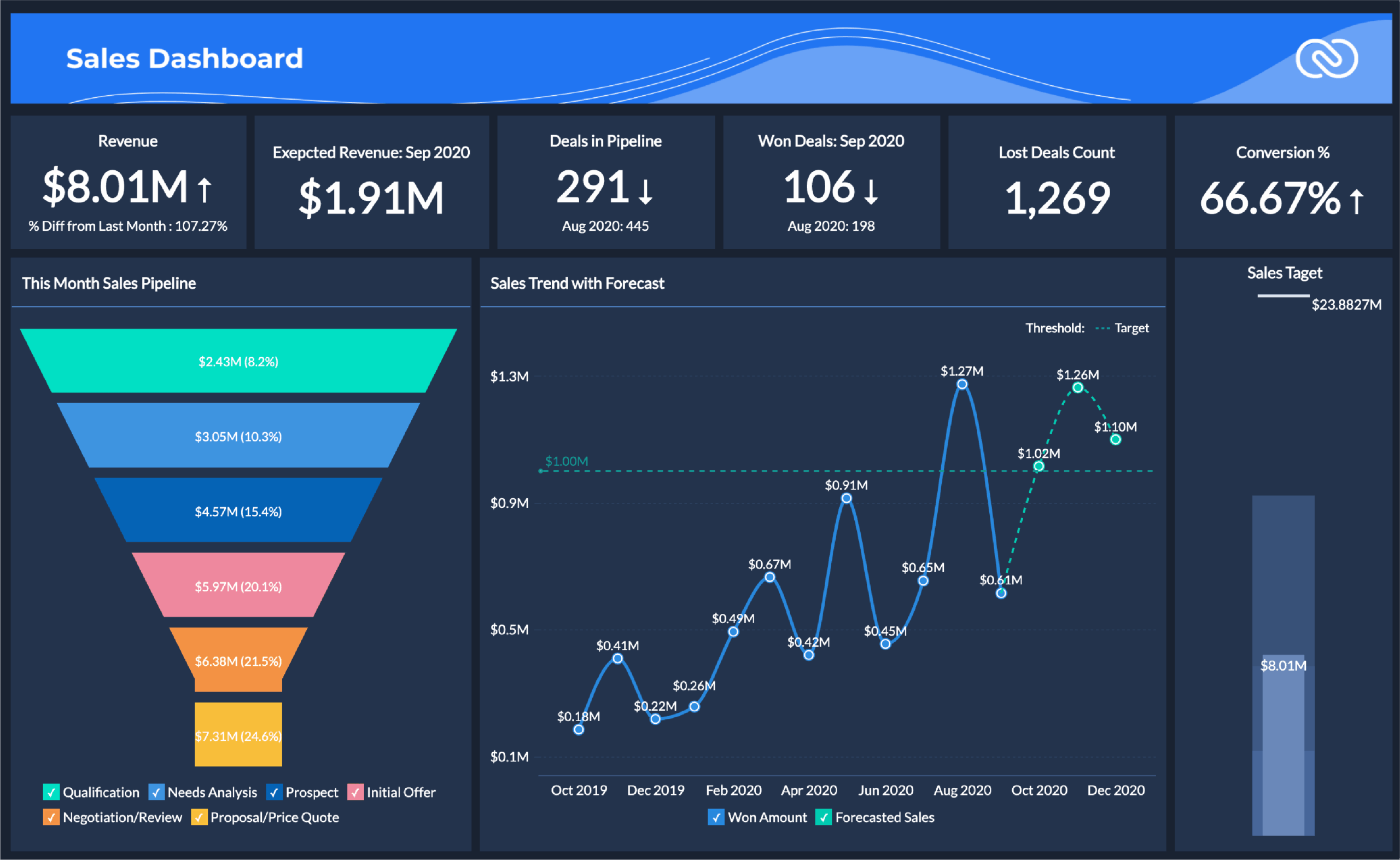
Introduction: The Power of CRM Marketing Metrics
In today’s fast-paced business world, data is king. And when it comes to marketing, understanding your customer relationship management (CRM) metrics is absolutely crucial. CRM marketing metrics are the key performance indicators (KPIs) that help you measure the success of your marketing efforts within your CRM system. They provide invaluable insights into customer behavior, campaign performance, and overall business growth. Without a firm grasp of these metrics, you’re essentially flying blind, unable to optimize your strategies and maximize your return on investment (ROI).
This comprehensive guide will delve deep into the world of CRM marketing metrics, providing you with a clear understanding of what they are, why they matter, and how to use them to drive significant improvements in your marketing performance. We’ll explore a wide range of metrics, from basic customer acquisition cost (CAC) to more advanced churn rate analysis. By the end of this guide, you’ll be equipped with the knowledge and tools to transform your CRM data into actionable insights, leading to more effective campaigns, higher customer satisfaction, and ultimately, increased revenue.
Understanding the Importance of CRM Marketing Metrics
So, why are CRM marketing metrics so important? The answer lies in their ability to provide a data-driven perspective on your marketing activities. They allow you to:
- Measure Campaign Effectiveness: Determine which campaigns are performing well and which ones need improvement.
- Optimize Marketing Spend: Allocate your budget more efficiently by focusing on the channels and campaigns that generate the best results.
- Improve Customer Experience: Gain a deeper understanding of your customers’ needs and preferences, allowing you to personalize your marketing efforts and provide a better overall experience.
- Increase Customer Lifetime Value (CLTV): Identify strategies that encourage repeat purchases and build long-term customer loyalty.
- Forecast Future Performance: Use historical data to predict future trends and make informed decisions about your marketing strategy.
In essence, CRM marketing metrics provide a roadmap for success. They help you track your progress, identify areas for improvement, and make data-driven decisions that drive sustainable growth. Ignoring these metrics is like trying to navigate a ship without a compass – you might get somewhere eventually, but the journey will be inefficient and potentially lead you astray.
Key CRM Marketing Metrics to Track
Now, let’s dive into the specific metrics you should be tracking. We’ll categorize them for easier understanding. Remember, the specific metrics you prioritize will depend on your business goals and industry.
1. Customer Acquisition Metrics
These metrics focus on the cost and efficiency of acquiring new customers.
- Customer Acquisition Cost (CAC): This is the total cost of acquiring a new customer. Calculate it by dividing your total marketing and sales expenses by the number of new customers acquired during a specific period. A lower CAC indicates a more efficient acquisition process.
- Marketing Qualified Leads (MQLs) to Sales Qualified Leads (SQLs) Conversion Rate: This metric measures the percentage of MQLs (leads who have shown interest in your product or service) that convert into SQLs (leads that your sales team has qualified as ready for a sales conversation). A high conversion rate indicates effective lead nurturing and qualification processes.
- Lead Conversion Rate: This measures the percentage of leads that convert into paying customers. It shows the effectiveness of your entire sales and marketing funnel.
- Cost Per Lead (CPL): This metric tracks the cost of acquiring a single lead. It helps you evaluate the efficiency of your lead generation efforts across different channels.
- Website Traffic to Lead Conversion Rate: This metric measures the percentage of website visitors who convert into leads by filling out a form or taking another desired action. It reflects the effectiveness of your website’s design, content, and call-to-actions.
2. Customer Engagement Metrics
These metrics focus on how customers interact with your brand and marketing content.
- Email Open Rate: Measures the percentage of emails opened by recipients. A higher open rate suggests a compelling subject line and relevant content.
- Email Click-Through Rate (CTR): Measures the percentage of recipients who click on a link within your email. A higher CTR indicates engaging content and a clear call to action.
- Website Bounce Rate: Measures the percentage of visitors who leave your website after viewing only one page. A high bounce rate may indicate poor website design, irrelevant content, or slow loading times.
- Social Media Engagement Rate: Measures the level of interaction with your social media content, including likes, shares, comments, and follows. A high engagement rate indicates that your content resonates with your audience.
- Customer Feedback Scores (e.g., NPS, CSAT): These scores measure customer satisfaction and loyalty. Net Promoter Score (NPS) measures the likelihood of a customer recommending your brand, while Customer Satisfaction Score (CSAT) measures their satisfaction with a specific interaction or product.
3. Customer Retention Metrics
These metrics focus on keeping existing customers and fostering long-term relationships.
- Churn Rate: Measures the percentage of customers who cancel their subscriptions or stop doing business with you during a specific period. A lower churn rate is crucial for sustainable growth.
- Customer Lifetime Value (CLTV): Predicts the total revenue a customer will generate over their entire relationship with your business. A higher CLTV indicates that customers are staying longer and spending more.
- Repeat Purchase Rate: Measures the percentage of customers who make multiple purchases over a specific period. A high repeat purchase rate indicates customer loyalty and satisfaction.
- Customer Retention Rate: Measures the percentage of customers who remain active over a specific period. It’s the inverse of churn rate.
- Average Purchase Value (APV): This is the average amount spent by a customer per order. Increasing this value is a key strategy for boosting revenue.
4. Campaign Performance Metrics
These metrics focus on the performance of individual marketing campaigns.
- Return on Investment (ROI): Measures the profitability of a marketing campaign. Calculate it by dividing the net profit from the campaign by the total cost of the campaign.
- Conversion Rate: Measures the percentage of leads or prospects who complete a desired action, such as making a purchase or filling out a form.
- Cost Per Conversion: Measures the cost associated with acquiring a single conversion.
- Click-Through Rate (CTR): Measures the percentage of users who click on a specific link or advertisement.
- Impressions: Measures the number of times your advertisement or content is displayed.
How to Implement CRM Marketing Metrics
Tracking and analyzing CRM marketing metrics is not just about collecting data; it’s about using that data to drive action. Here’s a step-by-step guide to help you implement these metrics effectively:
- Define Your Goals: Before you start tracking any metrics, clearly define your marketing goals. What do you want to achieve? Increase brand awareness? Generate more leads? Boost sales? Your goals will determine which metrics are most important to track.
- Choose Your CRM Software: Select a CRM system that offers robust reporting and analytics capabilities. Popular choices include Salesforce, HubSpot, Zoho CRM, and Microsoft Dynamics 365. Make sure the system integrates with your other marketing tools.
- Set Up Tracking: Configure your CRM system to track the relevant metrics. This may involve integrating with your website analytics platform, email marketing software, and social media channels.
- Collect Data: Ensure that your data is accurate and consistent. Regularly review your data collection processes to identify and correct any errors.
- Analyze the Data: Regularly analyze your data to identify trends, patterns, and insights. Use dashboards and reports to visualize your data and make it easier to understand.
- Take Action: Based on your analysis, make adjustments to your marketing strategy. This might involve optimizing your campaigns, improving your customer experience, or reallocating your budget.
- Monitor and Iterate: Continuously monitor your metrics and make adjustments as needed. Marketing is an ongoing process, and you should always be looking for ways to improve your performance.
Leveraging CRM Data for Actionable Insights
The true power of CRM marketing metrics lies in their ability to provide actionable insights. Here are some examples of how you can use these metrics to improve your marketing performance:
- Improve Lead Generation: Analyze your lead conversion rates to identify which lead sources are most effective. Optimize your website and landing pages to improve conversion rates.
- Personalize Customer Communication: Use customer data to segment your audience and personalize your email campaigns. This can significantly increase open rates, click-through rates, and conversions.
- Optimize Campaign Performance: Track the ROI of your marketing campaigns to identify which ones are most profitable. Reallocate your budget to the campaigns that are performing best.
- Reduce Churn: Identify customers who are at risk of churning and proactively reach out to them with personalized offers or support.
- Improve Customer Experience: Use customer feedback scores to identify areas where you can improve your customer service and overall experience.
- Increase Customer Lifetime Value: Identify opportunities to upsell and cross-sell products or services to existing customers.
Tools and Technologies for Tracking CRM Marketing Metrics
Fortunately, there are many tools and technologies available to help you track and analyze your CRM marketing metrics. Here are some of the most popular:
- CRM Systems: Salesforce, HubSpot, Zoho CRM, Microsoft Dynamics 365, Pipedrive. These systems provide built-in reporting and analytics capabilities.
- Marketing Automation Platforms: Marketo, Pardot, ActiveCampaign, Mailchimp. These platforms automate your marketing tasks and provide detailed performance data.
- Web Analytics Platforms: Google Analytics, Adobe Analytics. Track website traffic, user behavior, and conversion rates.
- Email Marketing Platforms: Mailchimp, Constant Contact, Sendinblue. Track email open rates, click-through rates, and conversions.
- Social Media Analytics Tools: Hootsuite, Sprout Social, Buffer. Track social media engagement, reach, and follower growth.
- Business Intelligence (BI) Tools: Tableau, Power BI, Looker. Create custom dashboards and reports to visualize your data.
Best Practices for Effective CRM Marketing Metric Tracking
To get the most out of your CRM marketing metrics, follow these best practices:
- Start Simple: Don’t try to track every metric at once. Start with a few key metrics that are most relevant to your business goals.
- Focus on Actionable Metrics: Choose metrics that provide insights you can use to improve your marketing performance.
- Set Realistic Benchmarks: Research industry benchmarks to understand how your performance compares to others in your industry.
- Regularly Review Your Metrics: Schedule regular reviews of your metrics to identify trends and make adjustments to your strategy.
- Automate Your Reporting: Use dashboards and automated reports to save time and ensure that you’re always up-to-date on your performance.
- Train Your Team: Make sure your team understands the importance of CRM marketing metrics and how to use them to drive results.
- Continuously Improve: Marketing is an ongoing process. Continuously look for ways to improve your data collection, analysis, and action-taking processes.
Conclusion: The Future of CRM Marketing Metrics
CRM marketing metrics are no longer a nice-to-have; they’re a must-have for any business that wants to thrive in today’s competitive landscape. By tracking and analyzing these metrics, you can gain valuable insights into your customers, campaigns, and overall business performance. This knowledge empowers you to make data-driven decisions, optimize your marketing efforts, and achieve sustainable growth.
As technology continues to evolve, so will the sophistication of CRM marketing metrics. We can expect to see even more advanced analytics, personalized insights, and predictive capabilities. The businesses that embrace these advancements will be best positioned to succeed in the future.
The journey of mastering CRM marketing metrics is an ongoing one. By consistently tracking, analyzing, and acting on the data, you can unlock the full potential of your marketing efforts and achieve remarkable results. Embrace the power of data, and watch your business flourish. Don’t just collect data; use it to fuel your growth. Your success in the world of CRM marketing metrics depends on your ability to adapt, learn, and continuously improve. The future is data-driven, and the time to act is now. So, take the plunge, delve into your CRM data, and start your journey towards marketing excellence. The rewards are well worth the effort.

